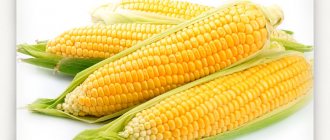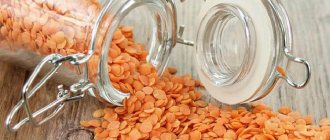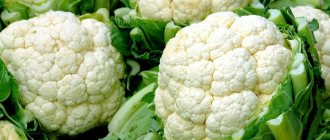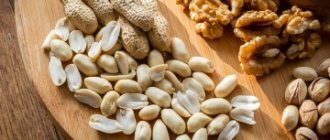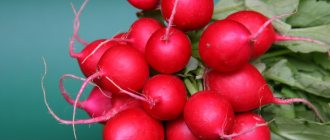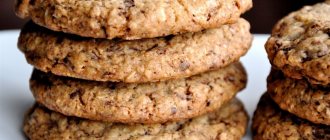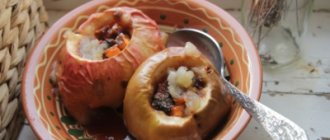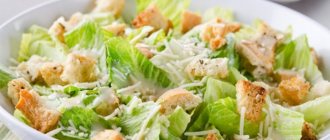During breastfeeding, a woman’s diet undergoes huge changes - all foods that could theoretically cause serious harm to the baby’s body are excluded from the young mother’s menu.
In this regard, many mothers have questions regarding this or that food, for example, is it possible to eat sesame while breastfeeding and whether it is safe. In our article we will try to answer it, and also consider the beneficial qualities of this product and the possible harm from its use.
Sesame has been known to man for quite a long time - even in ancient times, the seeds and oil of this plant were used in cooking and for skin care. However, this product has become widespread in our country relatively recently.
In addition to its high taste, sesame has a lot of useful properties that are associated with its unique chemical composition - the seeds of this plant contain a lot of vitamins and minerals. For this reason, pediatricians are extremely loyal to this product and strongly recommend including it in the diet of women who are breastfeeding.
Of course, like any other product, sesame also has a number of harmful properties that appear when consumed excessively, but these seeds have much more beneficial qualities.
Beneficial properties of sesame seeds
- The most important property of sesame is its effect on blood pressure
. A tablespoon of the seeds of this plant contains almost a quarter of the daily requirement for such a microelement as magnesium. This mineral dilates blood vessels, as a result of which the load on the circulatory system decreases, which entails a reduced risk of developing heart disease. - After childbirth, a woman’s body is quite depleted - most of her personal reserves of vitamins and minerals are spent on the production and saturation of breast milk. Eating foods such as sesame helps to quickly and effectively restore these reserves, since it contains a lot of nutrients. In addition, regular consumption of sesame seeds helps improve metabolism
in the body. - Sesame is considered extremely useful for those nursing mothers who suffer from diabetes or are predisposed to it. The seeds of this plant normalize blood sugar levels
and prevent sudden surges. - Sesame seeds have an absolutely unique set of microelements - they contain zinc, calcium and phosphorus
. These three elements play a key role in the development and strengthening of bone tissue. It is for this reason that it is especially important to include sesame in the diet of a nursing mother - the child’s skeleton is actively growing in the first year of life and his body’s need for these microelements is extremely high. - Sesame contains a significant amount of plant fiber
. These substances are necessary for the body for the normal functioning of the intestines and the entire digestive tract as a whole. This beneficial property allows nursing mothers to use sesame seeds as a natural remedy for constipation and digestive disorders. - Sesame is rich in copper
. This trace element is known for its anti-inflammatory properties. In addition, copper is involved in hematopoiesis processes, along with iron, and therefore we can say that sesame can indirectly have a positive effect on lactation - increasing the quantity and quality of breast milk produced. - In the modern world, there are a lot of different types of radiation - all electrical appliances emit various waves, in addition, there are a lot of other sources of radiation. Sesame contains such a unique substance as sesamol
. It has antioxidant properties and protects human DNA from changes, which negates all harm from various types of radiation.
Those nursing mothers who have problems with excess weight should pay attention to sesame seeds. Of course, this product is high in calories, but in moderation it helps speed up metabolism, which leads to weight loss.
Possible harm from eating sesame seeds during breastfeeding
When adding sesame to your regular menu, a nursing mother should not forget that the beneficial properties of these seeds appear only with moderate consumption. If you eat sesame unlimitedly, it can cause a number of negative consequences.
- In its chemical composition, sesame is very similar to nuts, and therefore it also contains difficult-to-digest vegetable protein. This substance quite often causes an allergic reaction in infants. It is expressed in the form of redness on the skin, as well as breathing problems.
- In some cases, the allergic reaction may occur slightly differently and affect the baby's digestive system. If the baby's stool consistency has changed, he is tormented by colic and gas, then these are symptoms of just such a case.
- The abundance of fiber in sesame seeds makes it not the best product for women suffering from inflammatory bowel diseases, such as colitis. The use of such a product in this case can significantly worsen the health condition and transfer the disease to the chronic stage.
- Particular attention to the amount of sesame eaten should be paid to those women who suffer from excess weight. The calorie content of just one tablespoon of these seeds is 50 kilocalories, and therefore excessive consumption of such a product can lead to even greater weight gain.
Beneficial properties of sesame seeds and oil
The rich composition of sesame determines many of its healing properties. This product is incredibly beneficial for the skeletal system of the baby and his mother, who shares calcium with the child during pregnancy and lactation.
Sesame is superior to most foods (except dairy) in calcium content, so it is extremely useful for strengthening bones
But the beneficial properties of sesame are not limited to this, because it also:
- reduces blood pressure;
- prevents the occurrence of diabetes;
- fights cholesterol;
- protects against anemia;
- helps liver function;
- has a calming effect on the nervous system;
- lifts the mood.
Chinese medicine uses sesame to maintain visual acuity, Ayurveda recommends sesame oil to clean teeth and improve their health. This product is believed to be beneficial for the respiratory system and even relieves spasms in asthma.
Sesame is also valued for the high quality of oil extracted from its seeds.
Of course, it differs in composition, for example, like the seeds, it contains fatty acids, vitamin E and phytosterols, but it does not contain the vitamins, minerals or amino acids that dry sesame is rich in. Therefore, the oil is a lesser allergen: 3 ml of oil (a teaspoon is equal to 5 ml) and only 100 mg (a teaspoon is equal to 7000 mg) of sesame seeds can cause an allergic reaction.
Sesame varieties also differ in their properties: black, white and red. Dark sesame has the brightest aroma, while white sesame has a more delicate aroma.
Scientists agree that black sesame is much healthier than its white counterpart.
The reason lies in the fact that, firstly, white sesame most often ends up on store shelves in peeled form and thus loses some of the beneficial calcium, and secondly, the calcium content in black sesame is almost 20 times higher than its content in white. Red sesame has no special medicinal properties. Red, white and black sesame seeds differ not only in color, but also in composition and beneficial properties
Regular vegetable oil can be replaced with sesame oil, but it has a specific taste, unlike refined olive or sunflower oil.
Andrey Prodeus, professor, immunologist
Program “Live Healthy” from 09/02/2011: Sesame. Persian guest
When and in what quantity can a nursing mother eat sesame seeds?
The specific chemical composition of sesame and its similarity to nuts makes this product not the best for the first months after childbirth. In addition, the abundance of fiber in the seeds can cause bloating, which is unacceptable in the case of women who have had a caesarean section.
For this and other reasons, pediatricians recommend introducing sesame into the diet of a nursing mother no earlier than three months after birth. By this time, usually the baby’s digestive system is already quite developed, and the mother’s body has time to recover a little.
For the first time, it is necessary to check whether the baby is allergic to sesame, so add only half a teaspoon of seeds to any safe and already proven dish. If there is no negative reaction within two days - the child does not have an allergy and feels well, then the portion of sesame is increased to the daily norm.
In cases where the child reacted poorly to a new product, its introduction is postponed for a month or two and the attempt is repeated.
Benefits for mother and baby
Due to its high calcium content, sesame is able to replenish the reserves of this element in the body of a nursing mother. In addition, the child also needs calcium for normal growth and development. Sesame enriches breast milk with vitamins and minerals necessary for the full development of the baby.
Since ancient times, sesame has been used to remove age spots, strengthen hair and nails, and generally strengthen the immune system. Sesame seeds also cope well with constipation and cleanse the intestines.
Tips for eating sesame while breastfeeding
You can find white and black sesame in stores. There are other varieties of this plant, but these are the most common. In terms of properties, they are approximately the same and differ only in taste.
- Before use, sesame seeds must be quickly fried - this will make them more flavorful and, most importantly, completely disinfected.
- You can make sauces for salads from sesame seeds, add them to baked goods or porridges. You can also use sesame oil to season food - it is a more useful analogue of a plant product.
Only fresh sesame is suitable for use by a nursing mother, so be sure to pay attention to the expiration date of the product and its storage conditions.
As you can see, despite its small size, sesame seeds have enormous beneficial properties during breastfeeding. The seeds and oil of this plant will make dishes for a nursing mother not only tastier, but also much healthier.
Every mother, while breastfeeding, wishes her baby maximum health and strives to transfer as many useful substances, vitamins and minerals as possible through breast milk. What products can help her with this? One of these useful gifts of nature is sesame.
Sesame is an annual plant from the oilseed family. The second name of this plant is sesame. Sesame seeds have been valued since ancient times and, due to their rich content of vitamins and microelements, lead the list of products recommended for breastfeeding. Therefore, any nursing mother can safely include this product in her menu.
From what month should it be included in the diet?
The child’s fragile body is still just adapting to the new conditions of independent life, and any new product can cause a negative reaction in him.
Beneficial features
Eating sesame will help a nursing mother if she has problems with lactation, as it helps increase the amount of milk and increase its calorie content. It is difficult to overestimate the anti-inflammatory properties of this product. After all, it serves as an excellent prevention of many problems with the mammary glands, primarily mastopathy. Let's briefly look at the unique composition of sesame:
Scientists have found that eating sesame helps solve many health problems in nursing mothers:
- normalizes acidity levels in the blood and stomach;
- improves the functioning of joints, reduces pain in them;
- regulates the functioning of the thyroid gland during its hyperfunction;
- normalizes metabolism;
- strengthens and restores the body during exhaustion and after a long illness;
- serves as an anthelmintic;
- cleanses the skin of pigment spots that appeared during pregnancy;
- normalizes intestinal function, providing a mild laxative effect for constipation;
- sesame and sesame oil are recommended for patients with diabetes mellitus, especially type 2.
Benefits during breastfeeding
Sesame seeds and oil are used in food.
Sesame is especially valued by pediatricians for its richness in calcium. If a baby has lactase deficiency, when dairy products cause intolerance, sesame can be an excellent source of calcium for mother and child. It is also known about the ability of sesame to increase the fat content of breast milk and stimulate lactation. At the same time, the product has an anti-inflammatory effect on body tissues, reduces the risk of mastitis and lactostasis. Sesame has other benefits:
- Contains a large amount of fiber, helps prevent constipation and normalize digestion.
- Improves the functioning of the cardiovascular system due to the presence of niacin in the composition. This component prevents the deposition of harmful cholesterol on the walls of blood vessels.
- Vitamin PP and nicotinic acid ensure effective processing of fat in the body and participate in the synthesis of amino acids.
- Strengthens the immune system. The varied vitamin and mineral composition of the product has a restorative effect on the entire body as a whole.
- Improves the condition of joints, strengthens bone tissue. Calcium is necessary for the mother to maintain healthy teeth and bones, and for the baby to form a strong skeleton.
But there is not much calcium in milk; there is more of it in sesame and poppy seeds.
Marianne
https://www.babyblog.ru/user/id1517487/162057
If you don’t fry it, the taste is completely different, bitter, not very pleasant and not as bright as fried sesame. And it is crushed equally. By the way, Urbech made from sesame seeds is sold in health food stores. This is also a paste, like tahini, but it is made from raw sesame seeds. The taste is completely different, bitter and unpleasant :))
Katyusha Colobush
https://www.babyblog.ru/community/post/1_3_pitanie/1704733
Poppy and sesame seeds have a very strong milk extracting effect.
julia
https://www.babyblog.ru/community/post/breastfeed/1202531
Can it be in a child’s diet?
Important!
Allergy to sesame seeds is quite common, so adding it to the diet of a child under one year old should be done with caution, carefully monitoring the reaction of his body.
Most often, such allergies are hereditary. Make sure in advance that your closest relatives do not have it and only then introduce the product to your baby’s menu.
Seeds as an element of complementary feeding
You can start giving your baby sesame seeds and sesame oil at 6-7 months.
, but not in its pure form, but adding it to dishes - porridge, mashed potatoes, soups. A few grains can be sprinkled on bread or seasoned with sesame oil (5-7 drops) on a salad. And children from 3 years old can be given sesame (tahini) halva or try the product in its pure form, but not more than 1/2 teaspoon per day.
The value of the product for the baby
To maximize the benefits of sesame for your baby, it must be consumed raw. The main beneficial properties of this product are:
- The high content of calcium, zinc, phosphorus and vitamin E contributes to the proper formation of bone tissue and teeth.
- The large amount of fiber in the seeds helps solve gastrointestinal problems in children.
For children with lactose intolerance, whose body does not absorb milk, sesame seeds, as the leader in calcium content, are an excellent substitute for dairy products.
What does sesame contain?
Sesame seeds do not contain vitamins A, C and D, but the product is rich in many B vitamins, in particular B1 and B2. But the content of vitamin PP is especially high - nicotinic acid, niacin.
Niacin is the most effective cholesterol regulator known to medicine, it helps cleanse the arteries of cholesterol deposits, reduces the level of triglycerides and lipoproteins in the blood, which threaten the health of the cardiovascular system.
In addition, nicotinic acid is actively involved in the conversion of fat and sugar into energy. Vitamin PP is involved in amino acid metabolism and other processes important for the body.
Sesame contains a complex of micro and macroelements, primarily:
- calcium;
- phosphorus;
- potassium;
- iron;
- zinc;
- copper;
- manganese.
Sesame seeds are a storehouse of calcium, which is easily absorbed by the human body. For this reason, this product can and should be added to the diet of a nursing mother.
What are the dangers of breastfeeding?
Note!
Excessive amounts of sesame in a nursing mother's menu can lead to nausea and vomiting.
Moreover, the mother herself may not have this, but it can easily manifest itself in the baby. If your baby vomits after feeding, this means that you have exceeded the permissible limit for this product. Or your baby has an individual intolerance. Then you should completely give up sesame seeds for at least a month, and then try to reintroduce it into your diet, starting with very small doses.
In addition, some diseases of a nursing mother may be contraindications for consuming sesame.
This is thrombophlebitis and increased blood clotting. In such cases, consulting a doctor about the use of sesame is mandatory.
Sesame cannot be combined with rhubarb and sorrel dishes, or with taking aspirin. With such combinations, the absorption of calcium slows down and there is a risk of urolithiasis.
In order not to damage the fragile and delicate body of the baby, a nursing mother should adhere to the following recommendations:
Daily and weekly norm
For the safety of the child, the daily dose of sesame seeds for a nursing mother should not be more than 50g.
With this maximum portion, the product should be consumed every other day. Thus, the weekly norm does not exceed 200g.
In the case of sesame oil, the maximum amount will be one dessert spoon (10g) per day. Seed oil can change the taste of milk, so you need to be very careful with it.
Sesame is a very valuable and healthy product from which you can prepare many delicacies. And the period of breastfeeding is not at all a reason to give up your favorite and usual treats. The main thing is to know when to stop.
During lactation, it is important for the mother to choose only healthy foods that will not cause allergies in the newborn baby and will not harm the growing body.
If a nursing mother wants to enjoy sweets, it is recommended to give preference to products that are as natural as possible, such as sesame cookies when breastfeeding. Such baked goods contain a large amount of vitamins and microelements, so let’s look at how to prepare it and when to start introducing it into your diet.
Sesame cookies are made from sesame seeds. Depending on the variety, they vary in color: white, yellow, red, brown, black. They contain a huge amount of useful substances. It is believed that the darker the color, the more valuable vitamins this variety contains.
The main beneficial substances include:
- Vitamins of groups A, B, C, D, PP
. This is especially important in the winter season, when there is an acute shortage of vitamins. - Calcium
, which is necessary for mother and baby during breastfeeding. An additional advantage is that this dish is easily absorbed by the body. - Potassium
, needed for the heart and blood vessels. - Copper
, necessary for the normal functioning of the nervous system. - Iron.
Particularly useful for the proper functioning of the digestive, endocrine and immune systems. - Zinc
helps improve the appearance of the skin. - Phosphorus,
essential for bones. - Niacin.
This element is actively involved in the functioning of the cardiovascular system, helps cleanse blood vessels and reduce cholesterol. - Fiber
, which improves the functions of the gastrointestinal tract.
The benefits of sesame cookies during breastfeeding
Among the main valuable properties of this dish are:
- Strengthening the musculoskeletal system.
- Normalization of blood pressure.
- Improving the functioning of the cardiovascular and nervous systems.
- Benefits for the appearance of skin, hair, nails, teeth. Helps eliminate age spots.
- Stabilization of the hormonal levels of a nursing woman.
- Strengthening the immune system.
- Improving blood composition.
- Benefits for vision.
- Rejuvenating effect for the body.
- Acceleration of metabolism. Thanks to this, excess fat is not deposited, which promotes weight loss.
- Combating constipation, which often plagues women during the postpartum period. Sesame seeds have a mild laxative effect, so they help to establish the proper functioning of the gastrointestinal tract.
- Sesame improves lactation, stimulates additional production of breast milk, and increases its fat content.
Types and composition of sesame
A type of annual herbaceous plant of the genus Sesame.
Small sesame seeds are used to prepare kozinaki and halva, sauces and pastes, and as an additive to baked goods. The seeds contain a large amount of fatty acids; oil is extracted from them, used in cooking, medicine and cosmetology. Externally, sesame varieties differ in color. Seeds can be white, brown, black, yellow. Basically, the color depends on the method of grinding and heat treatment. Black sesame is a raw seed, white sesame is ground and peeled. As a result of roasting, the white seed acquires a golden or brown hue.
Sesame seeds are rich in fat, which determines the high calorie content of the product (about 560 kcal per 100 g). However, the oil contained in abundance in sesame is represented by unsaturated fatty acids, Omega-6, which have a beneficial effect on brain activity and the hormonal levels of a nursing woman. Sesame is rich in vitamins B1 and B2, which are involved in carbohydrate metabolism and protect against the formation of cholesterol plaques, improving liver function. Vitamin E is necessary for mother to maintain the beauty of the skin, ensure its firmness and elasticity. Vitamin PP is involved in the process of cleansing blood vessels and supports heart function.
The mineral composition of the product is unique, providing its beneficial properties for the well-being of a nursing woman and the healthy development of the baby. Sesame is especially notable for the presence of a large amount of calcium in its composition . The concentration of this microelement is higher than in any dairy product. This property is overshadowed by the fact that most of the calcium is contained in the seed coat, which is removed during grinding. The absorption of the mineral in the body is hindered by phytin and oxolates, which are also present in the composition, but are practically eliminated by heat treatment. But even these factors do not prevent sesame from being a source of large amounts of calcium.
Sesame is rich in magnesium and potassium, which are necessary for hematopoiesis and proper functioning of the heart, maintaining the elasticity of blood vessels and veins. In high concentrations, the product contains phosphorus and iron - valuable minerals for the development of tissues and organs of the baby, involved in the synthesis of amino acids, strengthening bone tissue.
Table: chemical composition and nutritional value
| Nutrient | Quantity | % of the norm in 100 g* |
| Calorie content | 565 kcal | 33.6% |
| Squirrels | 19.4 g | 25.5% |
| Fats | 48.7 g | 81.2% |
| Carbohydrates | 12.2 g | 5.8% |
| Alimentary fiber | 5.6 g | 28% |
| Vitamins | ||
| Vitamin B1, thiamine | 1.27 mg | 84.7% |
| Vitamin B2, riboflavin | 0.36 mg | 20% |
| Vitamin E, alpha tocopherol, TE | 2.3 mg | 15.3% |
| Vitamin RR, NE | 11.1 mg | 55.5% |
| Niacin | 4 mg | — |
| Macronutrients | ||
| Potassium, K | 497 mg | 19.9% |
| Calcium, Ca | 1474 mg | 147.4% |
| Magnesium, Mg | 540 mg | 135% |
| Sodium, Na | 75 mg | 5.8% |
| Phosphorus, Ph | 720 mg | 90% |
| Microelements | ||
| Iron, Fe | 16 mg | 88.9% |
| Fatty acid | ||
| Omega-6 fatty acids | 19.6 g | 116.7% |
| Monounsaturated fatty acids | 19.5 g | 100% |
| Polyunsaturated fatty acids | 19.6 g | 100% |
% of the norm in 100 g* - approximate values for a middle-aged nursing woman
How to properly consume sesame cookies during lactation
Sesame and dishes made from it are certainly useful for almost any person. Allergic reactions to sesame are rare, but there is a possibility of individual intolerance to the product.
You should be aware that there are contraindications to eating cookies. These include blood clotting disorders and a tendency to form blood clots. Therefore, people with such diseases should completely stop eating sesame cookies.
To safely introduce sesame cookies into your diet while breastfeeding, you need to adhere to the following recommendations:
- It is advisable to wait 3-4 weeks from the moment your baby is born before trying sesame cookies.
- The first time you need to eat 1 - 2 cookies.
- The baby’s well-being should be monitored for three days.
- If the reaction to this product is favorable, you can increase the portion to 4–5 pieces at a time.
- Sesame seeds must be chewed thoroughly without swallowing whole.
In addition, it is important to know that you can only eat fresh sesame. During long-term storage, it loses most of its beneficial properties and becomes bitter in taste due to oxidation of the oil.
Contraindications
A lot has been said about the benefits of magical sesame seeds, but every coin has a flip side, so we advise you to carefully read the contraindications before using this product.
Currently, cases of allergic reactions to sesame are increasingly being reported. Europe and Canada have included this product in the list of allergens that must be specifically identified in food products. In Israel, sesame seed is in third place among food allergens, in Australia it is in fourth place. Signs of an allergic reaction are: hives, dermatitis, itching, swelling of the throat, abdominal pain, difficulty breathing. In a child, it may manifest itself in the form of nausea or vomiting, and in this case it is better to postpone the use of sesame for at least a month.
At the first sign of an allergic reaction to kuzhum, you should stop taking this product and consult a doctor.
- Wilson's disease, associated with excessive accumulation of copper in the liver;
- gout;
- disturbances in intestinal function;
- increased level of blood clotting;
- tendency to thrombosis and varicose veins.
Also a contraindication is colic in a baby.
Sesame is incompatible with sorrel and rhubarb due to deterioration in calcium absorption and the possibility of urolithiasis. Excessive consumption of sesame seeds or oil can have a negative effect on your health and lead to colon inflammation, weight gain, miscarriage in the first trimester of pregnancy and hair loss due to hormonal imbalance.
If none of the ailments listed above plague you, sesame consumption is recommended within a teaspoon per day, and sesame oil within 2-3 tablespoons.
Recipe for homemade sesame cookies for mom during breastfeeding
Required Ingredients
- Sesame seeds – 200 g;
- Egg – 1 pc.;
- Butter – 70 g;
- Flour – 100 g;
- Sugar – 80 g;
- Salt – 1/3 tsp.
Cooking process
- Lightly fry the sesame seeds in a frying pan and cool.
- Melt the butter. Beat with sugar using a mixer or whisk.
- Add the egg and beat again.
- Mix flour and salt.
- Gradually add flour and salt, stirring constantly.
- Add sesame seeds in the same way.
- Line a baking sheet with permanent paper.
- Use a spoon to place cookies in approximately equal portions at a distance of 3–4 cm from each other.
- Place the baking sheet in an oven preheated to 180°C.
- Bake for 15 – 20 minutes.
Sesame cookies during breastfeeding are among the healthy sweets that can be eaten a month after giving birth.
Allergic reactions to sesame are not common, but one should not forget to be careful when introducing a new product into the diet. If the baby’s well-being does not worsen after eating sesame cookies, you can eat them, but no more than 5–10 pieces per day (depending on the size).
Crackers are a popular type of cookie that literally melts in your mouth. This is a quick and satisfying snack that relieves hunger for a long time. Today they make salty, cheese and sweet crackers, as well as cookies with various additives. Sesame seeds and nuts, cocoa and chocolate chips, cumin, poppy seeds and other components are added to the recipe. In this article we will look at whether a nursing mother can eat crackers.
Harm and danger of crackers during breastfeeding
Crackers are an undesirable product for breastfeeding, as they contain yeast and fermentation products, large amounts of fat and sugar, leavening agents, flavorings and dyes, and other chemical and dangerous additives. This composition causes stomach upset and poisoning, an allergic reaction.
In addition, when making crackers on an industrial scale, harmful margarine is often used, and eggs are replaced with melange. If stored improperly, the latter component becomes a source of dangerous diseases. Therefore, a tasty and satisfying cracker is not recommended during breastfeeding, especially with various additives.
Pediatricians do not recommend eating rich yeast baked goods during breastfeeding. This fatty and high-calorie food slows down the metabolism and impairs the digestion of the baby. As a result, the baby develops allergies, constipation or diarrhea, stomach upsets and even intoxication. In addition, infants experience increased colic and flatulence. And for a nursing mother, yeast is fraught with extra pounds and a spoiled figure.
Video: Elena Malysheva and Professor Prodeus about the benefits of sesame
Eating sesame seeds, sesame flour and oil for a mother who is breastfeeding her baby is not only possible, but also very useful if she is not allergic to these products. They are a source of many vitamins and minerals and, if consumed correctly and in moderation, will not harm mother and baby.
Creating a diet for breastfeeding is a crucial moment. A woman needs to eat well in order for her body to recover after childbirth. It is also important that the food is healthy and does not harm the child. Can a breastfeeding mother eat sesame seeds? This question is very interesting and requires detailed consideration.
Sesame is the seed of a plant of the same name that grows in Asia. Also called sesame, the seeds have long been used to produce valuable oil; they are also used as seasonings and additives for baked goods and sweets.
- Sesame is a dietary product, has a lot of useful qualities, and does not pose a threat to babies in terms of allergies. Therefore, it is possible and even recommended to use it while breastfeeding. What are the benefits of these small seeds for the body of mother and child?
- If the mother has little milk and its fat content is insufficient, sesame seeds can be used to increase lactation and increase the amount of fat.
- At the same time, despite the fat content of the product, you will not gain weight from it; its components have the ability to convert fat and sugar into energy, and this is important for a woman who has given birth.
- Sesame is also famous for its ability to prevent the formation of cholesterol plaques in blood vessels.
- Anti-inflammatory properties save a woman from the development of mastopathy and other pathological processes in the mammary glands. It can be taken not only internally; at the first signs of inflammation, compresses are applied to the chest.
- If the postpartum period is accompanied by constipation, the seeds are used as a laxative, which has a gentle effect on the intestines.
- Sesame seed normalizes skin balance, pigment spots disappear in mothers, and in children it protects against the appearance of rashes and diaper rash on the skin.
- The product is considered a natural immunomodulator; its use will help the woman and her baby improve their health, making it more difficult for infections to penetrate.
- It has a beneficial effect on the functioning of the pancreas; it is recommended to use it when the thyroid gland is too active.
Therefore, if you include this valuable product in your diet while breastfeeding, it will help strengthen the baby’s body, replenish the lack of elements, and help the mother recover.
Homemade cracker for breastfeeding
Bans on crackers apply only to store-bought products. Homemade cookies during lactation will be quite safe if you follow the rules of consumption and preparation. At home, you can make crackers without fat and sugar, including any safe ingredients. In this case, it will become a suitable alternative to cakes, sweets, chocolate and other unhealthy sweets.
A homemade cracker will be an excellent snack between main meals and a suitable treat for tea. In addition, such cookies are used as a base for canapés or cake layers, for preparing salads and desserts. However, it is better to introduce even homemade crackers after including unleavened types of cookies.
For a nursing mother, it is better to choose unleavened or lean cookies without unnecessary additives or additional flavors. Oatmeal cookies will do. Galette cookies “Maria” and “Jubilee” contain a minimum of sugar and extremely rarely cause allergies. The hypoallergenic dietary product can be consumed in small quantities already in the first month of breastfeeding. For more information about introducing cookies into the diet of a nursing mother, see.
After three months, try homemade crackers. It is important that the first cracker is without unnecessary additives and contains a minimum of components. Options with sesame seeds, nuts, raisins and other ingredients are best included after four to six months. For the first time, try a small piece of cracker and watch your baby's reaction. If there is no negative reaction, you can occasionally eat the product.
Cracker recipes
Cheesy
- Hard cheese – 150 grams;
- Egg – 1 piece;
- Premium flour – 160 grams;
- Chilled butter – 150 grams.
Grate the cheese, separate the egg yolk from the white, sift the flour and chop the butter. Grind the butter with flour, add the yolk and cheese. Knead the dough, adding more flour if necessary. Roll the mass into a bun and wrap it in cling film, put it in the refrigerator for forty minutes. After this, divide the frozen ball into parts and roll each into a circle or square.
Cut the resulting shapes into squares, triangles, diamonds, etc. Make holes in the blanks on the surface. Grease a baking tray with oil, place the figures and bake at 180 degrees for 15 minutes. Leave the cookies on the baking sheet until they cool. Otherwise the cracker will break.
Salty
- Frozen butter – 120 grams;
- Milk – 60 ml;
- Fine salt - 2 teaspoons.
Sift the flour and grate the butter. Mix flour, butter and salt. Add milk and knead the dough until it becomes thick and elastic. Roll into a ball and place in the refrigerator for 30-40 minutes. Roll out the chilled dough, divide into pieces and form into desired shapes. Bake the cracker at two hundred degrees for up to 15 minutes. By the way, these cookies are great for making sandwiches or canapés with meat products and fish, vegetables and cheese.
Sweet
- Sour cream – 3 tablespoons;
- Premium flour – 250 grams;
- Soft butter – 100 grams;
- Sugar – 50 grams;
- Condensed milk - 4 tablespoons.
Mix butter with flour and sugar, rub thoroughly until smooth. Add condensed milk and sour cream, knead the dough. Roll into a ball and place in cling film, leave in the refrigerator for half an hour. Roll out the chilled dough and shape into shapes. Bake for 10-15 minutes at 180 degrees. These crackers are suitable as a treat and snack for children over two to three years old.
With sesame
- Premium flour – 200 grams;
- Milk – 120 ml;
- Vegetable oil – 2 tablespoons. spoons;
- Sesame oil – 2 tablespoons. spoons;
- Sugar – 1 teaspoon. spoon;
- Salt – 2 teaspoons
- Sesame – 3.5 tablespoons;
- Baking powder – 1 tsp. spoon.
Sift the flour, mix with salt and sugar, baking powder and sesame seeds. Carefully pour milk into the dry mixture, add vegetable and sesame oil, stir thoroughly and knead the dough. Leave under a towel for twenty minutes, then roll out and cut out shapes. Bake at 190 degrees for 10-15 minutes.
A complete diet is necessary for every breastfeeding woman. A newborn baby needs sufficient intake of mother's milk for physical and mental development. Establishing lactation depends a lot on the supply of nutrients from food. Sesame during breastfeeding will help meet the body's needs.
The seeds of this Asian plant are also called sesame and have long been used to obtain sesame oil. It is rich in polyunsaturated fatty acids and has a beneficial effect on health. The seeds themselves, in large quantities, accumulate a lot of useful substances necessary during breastfeeding.
Sesame is used as a seasoning and for sprinkling baked goods. When roasted, the seeds acquire a characteristic taste that complements many dishes well.
Properties of sesame:
- The seeds have the property of increasing the amount of milk. Its use is useful during periods of lactation crises, when milk volumes decrease or a sharp jump in the baby’s growth occurs.
- Sesame is the champion in calcium content. This mineral is one of the most essential components in a mother’s diet. Calcium consumption during lactation is especially high. A nursing mother must not only provide them for her baby, but also compensate for her needs, which during lactation reach a level of 2 grams per day. A baby needs up to 600 mg per day.
- The laxative properties of sesame are useful for breastfeeding women. The first time after childbirth, most mothers face the problem of constipation. Fresh stitches interfere with natural emptying. Sesame will help cope with a delicate problem.
- The seeds contain a special component – niacin, which helps reduce cholesterol levels in the blood. Polyunsaturated fatty acids enhance its effect.
- Sesame is a natural antioxidant. This property allows you to prolong youth, reduce the risk of diseases and normalize the functioning of the body, exhausted by pregnancy and childbirth.
Considering all the beneficial properties, there is no doubt about the answer to whether it is possible to eat sesame during breastfeeding. Regular consumption of food will bring only one benefit.
Fatty acid composition of sesame oil
- linoleic acid - 39-47%;
- oleic acid - 37-42%;
- palmitic acid - 8-11%;
- stearic acid - 5%;
- alpha-linolenic acid - 0.2%.
Despite the fact that the body limitedly synthesizes other vital PUFAs from these acids, consuming sesame oil will benefit a nursing mother. Breastfeeding requires an increased supply of nutrients.
Sesame oil is widely used for body and hair care. Sesame seed oil provides effective hydration to the skin without causing clogged pores. When applied to clean, damp skin, it rejuvenates and smoothes the epidermis. The rich composition nourishes and softens the skin. Many women who are keen on making their own cosmetics create real beauty elixirs based on vegetable oils, including sesame.
Hair masks with sesame, applied before washing, quickly restore its structure and add shine. This oil is hypoallergenic and is used to lubricate the folds of a newborn. The content of polyunsaturated fatty acids helps to strengthen the barrier function of the skin and prevent the penetration of infections.
Which sesame is better
White, brown, red and black varieties of sesame are available for sale. The darker the color, the more nutrients it contains. The most common type is white, unroasted sesame. Despite the fact that such a product has great nutritional properties, it does not have a characteristic pleasant taste and aroma. Therefore, it is permissible to lightly fry it to improve its taste.
When choosing, you should carefully examine the seeds. A quality product contains dry, crumbly seeds without signs of mold. The best choice would be fresh goods. There is no need to buy a lot of sesame seeds at once. Its bright taste ensures slow consumption.
Despite all the beneficial properties of sesame, you should not overuse or eat too many seeds. This can cause digestive disorders and an allergic reaction in the baby.
Plant varieties
Most often we eat white sesame.
It is what is present in the buns, pies and bread that we buy. However, there is another variety of this plant - black sesame. What is the difference between these varieties of sesame? As studies have shown, the content of useful substances in black sesame is much greater than in white sesame. Such seeds will quickly saturate the body with calcium, vitamins D, E and A. If you prepare the seeds yourself, then black seeds need to be fried a little longer than white ones.
Read also:
Eggplants for mother and baby during breastfeeding
Black sesame oil is also particularly valuable. It can be used both for food and as masks for hair and face.
Where is sesame used?
The main use of seeds is sprinkling baked goods to add a pleasant taste and aroma. But a good housewife can come up with many dishes using sesame seeds. For example, adding seeds to fried chicken wings can add an unusual flavor to a familiar dish. Of course, such food cannot be called healthy and certainly cannot be recommended for nursing mothers, but occasionally you can treat yourself.
Sesame adds a good flavor to rice dishes. Even regular Japanese style fried rice will take on a different flavor with the addition of toasted sesame seeds. A good addition would be pieces of chicken, fish or shrimp. This dish will not harm a nursing mother. It is only important to avoid excess vegetable oil when frying.
Kozinaki is a delicious sesame product. Roasted seeds mixed with sugar syrup will appeal to nursing and pregnant women. This delicacy will help effectively supply the body with the necessary amount of calcium. Increased intake of the mineral involves not only breastfeeding, but also pregnancy. But you shouldn’t lean on kozinaki. High sugar content is harmful to health. It is also believed that excessive calcium intake can cause early closure of the fetal fontanelles, which can cause problems during childbirth.
How to roast sesame seeds
To fry sesame, you only need a frying pan. No oil needs to be added. Quality seeds never need to be pre-washed. This procedure will ruin them and prevent them from frying properly.
Start frying by heating over low heat, gradually increase the temperature, but do not bring it to maximum, otherwise the sesame will simply burn. As processing proceeds, the seeds are constantly stirred to ensure uniform roasting.
Readiness is determined by the color changing to light straw and the appearance of a pronounced nutty aroma. At this point, it is important to prevent the seeds from overcooking. In this case, all their beneficial properties will be lost.
Drawing up a menu for a young mother is of paramount importance for maintaining and strengthening her health. Many women do not know whether they can use this or that product. Sesame is not only allowed, but also very useful. The intensity and duration of the lactation period largely depends on quality nutrition.
